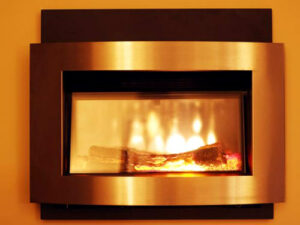While electricity is crucial for everyday living, it can severely injure users, damage property, and even kill them. Electrical accidents can cause shocks, severe burns, destroy internal organs and nerves, explosions, and fires. There are many common electrical problems that you should be aware of and more importantly, how to correct them.

8 Common Electrical Problems and How to Solve Them
Familiarizing yourself with these signs of electrical problems makes it easier to spot issues immediately after they start happening for immediate response. Your home could be experiencing a major electrical issue if you have any of the following:
- hot outlets
- flickering lights
- aluminum wiring
- a burning smell
- poorly grounded gas lines
- ungrounded electrical systems
- loose outlets
- and others
This article outlines eight common electrical problems and how to solve them.
1. Power Surges
Power surges occur when there’s a significant rise in your electrical system’s current and they are one of the most common electrical problems. While they only last for less than a second, they leave lifelong damage to the plugged-in appliances and outlets. This is because the power surge overloads the circuits connected to the electrical system. Devices that can’t withstand the overload usually get damaged. An electrical overload may be caused by overusing extension cords, plugging in many appliances, or using an appliance beyond the circuit’s amperage level.
If your electrical wiring is faulty or the casing has been exposed, an electrical surge will likely happen due to less electrical resistance. Any conductive material can increase the wire’s current to a hazardous level. Your property may have faulty wiring if there’s a burning smell, outlets contain visible burn marks, buzzing or vibration sound from the outlet, or the circuit breaker tripping regularly.
When lighting strikes your electrical system, it experiences an excessive current that leads to a huge spike, creating a power surge. When power is restored after a blackout, the unexpected current jump may result in a power surge, destroying unpowered appliances. Consider using time-delay fuses to provide overload protection to your circuits subject to surge currents and temporary overloads.
2. Electrical Circuit Overloads
Electrical circuit overloads occur when you draw more power from a circuit than it can safely handle. Electrical circuits have a limit to the amount of electricity they can take. Exceeding the circuit wiring’s rated load trips the circuit breaker, shutting off the entire circuit’s power. If your circuits don’t have breakers, overloads can cause the wiring to overheat, melting the insulation wires and causing a fire.
Signs of electrical overloading include a tripping breaker causing power shutdown, dimming lights, mainly when you turn on more lights or appliances, buzzing switches or outlets, switch or outlet cover warm to the touch, scorched outlets or plugs, and burning odors from switches or outlets.
For safety, ensure that your circuit’s normal load doesn’t exceed 80% of the rated load. Consider shifting plug-in appliances to less used circuits, avoiding turning on too many items at once, and replacing incandescent light bulbs with LED ones to lessen lighting loads. In addition, be sure to regularly clean your breakers and outlets to remove dirt and dust that builds up over time. Intentionally tripping a circuit breaker every time you work on a circuit can help ensure it is not overloaded.
3. Electrical Grounding Issues
Electrical grounding is a significant aspect of your property’s electrical wiring because of the equipment damage and safety risks linked to poor grounding. Ungrounded or improperly grounded electrical systems may cause fires, increase the risk of socket and outlet shocks, and even electrocution.
With proper grounding and wiring, you can enhance your property’s safety. Start by testing your electrical receptacles for grounding to ensure you and your loved ones are safe. Ensure you have an excellent grounding system and keep all the connections grounded.
4. Loose Electrical Outlets
Electrical outlets are integral to your daily life because all the appliances you use, including computers, TV sets, lamps, and more, rely on them for energy. Outlets can become loose when they face wobbles, or the receptacles are too loose that the plugs fall off. They usually loosen when attached to electrical outlets far away from the wall.
Damaged contact points and sparks and heat from poor wiring also lead to loose electrical outlets. You can fix a loose electrical outlet using outlet shims, a screwdriver, and a wire tester. Since fixing electrical outlet issues can be risky, it’s safe to call an experienced and certified electrical technician to handle the problem.
5. Overlamping
Overlamping arises from using a light bulb whose wattage is larger than the fixture’s recommended level. Using the wrong wattage increases the electrical arc, heats the socket, and melts the fixture’s wires, causing severe electrical fires. Always use recommended bulbs adhering to their respective wattages to solve this problem. For the older fixtures that don’t specify the wattage suggestions, use lower than 60-watt bulbs. This is the safest option, as their electrical consumption isn’t as high.
6. Flickering Lights
Flickering or dimming lights are signs of severe or minor electrical issues. Loose bulbs, loose plug connections, wrong dimmer switch bulbs, and the type of bulb you’re using, an overloaded circuit, lack of utility service, voltage fluctuating, loose or old wires, arcing, or issues with the primary connection are some of the causes of flickering lights. Not all flickering lights are a cause for worry. If you aren’t sure why your lights are flickering, call a professional to diagnose and fix the issue.
7. Aluminum Wiring
Aluminum wiring is a significant electrical threat you shouldn’t ignore. It can separate from the electrical outlets, lights, and switches’ screws, creating a poor connection and causing wires to heat up. This heat can oxidize the aluminum, creating a worse connection and even more heat that can eventually cause a fire.
High electrical resistance, less ductile, galvanic corrosion, oxidation, great malleability, increased thermal contraction and expansion, and excessive vibration make aluminum a poor wiring material. For any worries regarding aluminum wiring, consult your electrician for advice.
8. Abnormally High Electricity Bills
If your electricity bills are abnormally high, it could be due to various reasons. Faulty electrical wires can be hazardous, causing home emergencies like electrocution and fires. These wires may connect with electrical objects, making them heat up and consume more electricity.
To determine if there’s faulty wiring, look at the appliances’ plug and wiring. If it seems fine, there could be a problem with your home wiring. Call your electrician to inspect the wiring to spot any deterioration for quick maintenance. A faulty electricity meter could also cause the problem, so get it checked.
Endnote
Electrical problems may result in fires, shocks, electrocution, burns, property damage, and death. Familiarize yourself with these common electrical problems and how to solve them to stay safe.



